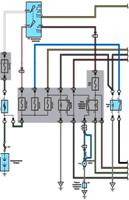We remove sensors and other elements of the engine control system for inspection and replacement
Removing and installing ignition coils
We prepare the car and remove the decorative engine cover (described in the article - How to remove the decorative cover and mudguard of the 2AZ-FE Toyota Camry engine)
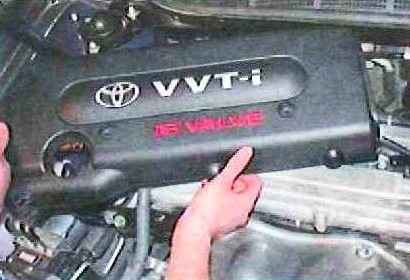
Disconnect the negative battery terminal

Squeeze the latches and disconnect the wire block from the coil being removed
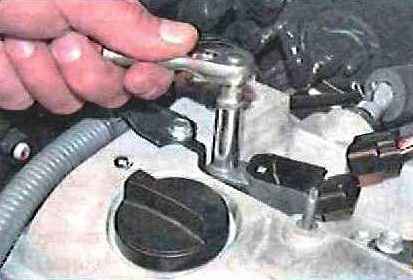
With a head of 10, unscrew the bolt securing the ignition coil to the cylinder head cover
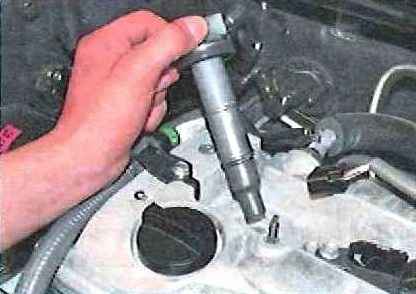
Remove the ignition coil from the cylinder head well

To replace the coil, use a coil with the same marking as indicated on the coil
Install parts in reverse order
Removing and installing an ECU (electronic control unit)
Disconnect the negative battery terminal
Remove the air filter (described in the article - Removing and installing the air filter of the 2AZ-FE Toyota Camry engine)
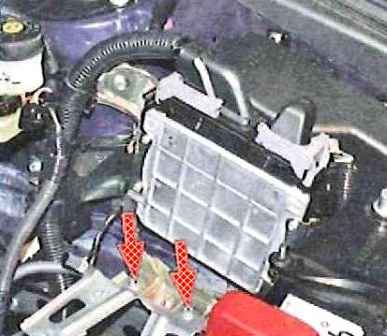
We unscrew the two bolts and remove the air filter mounting bracket
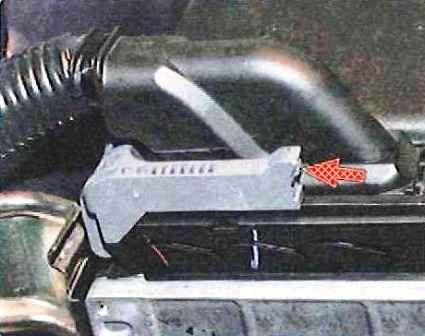
We press the buttons of the latches and fold back both latches of the wiring harness pads

Disconnect the pads from the computer

We unscrew the three screws and remove the control unit assembly with the bracket
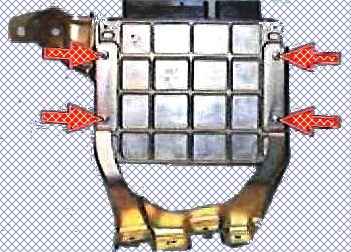
We unscrew the four screws and remove the mounting bracket from the computer case
Install all parts in reverse order
Removing and installing the crankshaft position sensor
The crankshaft position sensor is mounted in front of the engine block
If a malfunction occurs in the sensor circuit, the engine stops working, the controller stores the malfunction code in memory and turns on the signal lamp
We prepare the car and remove the negative battery terminal
Remove the lower right and side engine mudguards
Remove the accessory drive belt
We remove the generator (described in the article - Opera instructions for replacing the Toyota Camry generator)
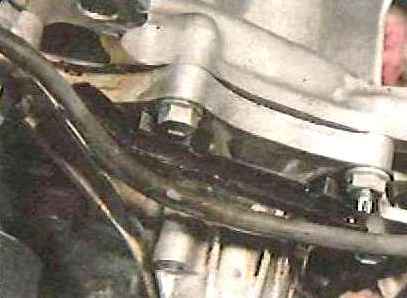
Release the crankshaft position sensor wiring harness from the guide
Disconnect the harness holder from the water pump
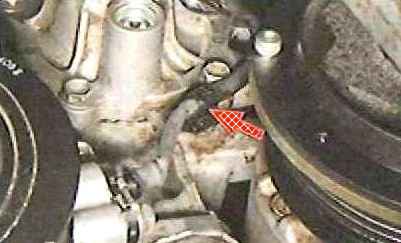
Unscrew the mounting bolt and remove the crankshaft position sensor
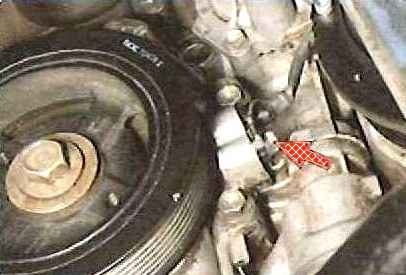
To check the sensor for serviceability, we measure the resistance between the contacts of its block
At +10º to ±50º C, the resistance should be 985-1600 Ohm
Install the sensor in reverse order
Replacing the camshaft position sensor
The camshaft position sensor is located at the rear of the cylinder head
If there is a malfunction in the sensor circuit, the controller stores the malfunction code and uses a bypass engine control program (without changing the valve timing)
Remove the engine cover and disconnect the negative battery terminal
Remove the air filter cover assembly with the air supply sleeve.
Remove the air filter element
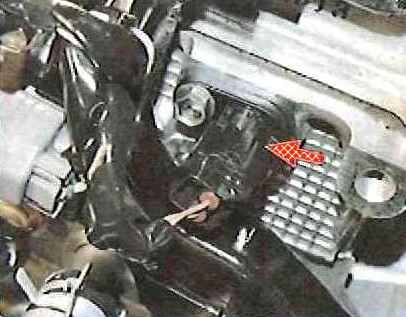
Disconnect the wire block from the camshaft position sensor
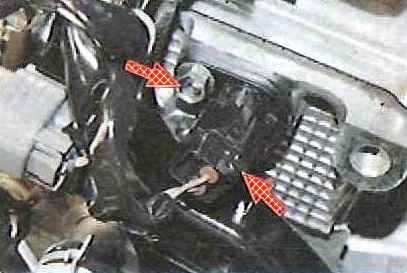
Unscrew the mounting bolt and remove the sensor from the hole in the cylinder head
To check the sensor, we measure the resistance between its contacts.
At +10º to ±50º C, the resistance should be 835-1400 Ohm
Install the sensor in reverse order
Removing and installing the coolant temperature sensor
Data to test the temperature sensor:
|
T º C |
Resistance, kohm |
|---|---|
|
-20 |
11.0-25.0 |
|
0 |
5.0-10.0 |
|
20 |
2.4-4.0 |
|
40 |
1.0-1.9 |
|
60 |
0.5-0.9 |
|
80 |
0.25-0.6 |
The coolant temperature sensor is screwed into the threaded hole in the cylinder head
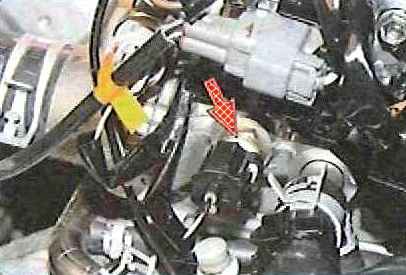
In the event of a sensor failure, the controller stores the fault code and uses a bypass engine management program.
The electronic control unit then calculates the approximate value of the coolant temperature from the engine running time and air mass flow
Remove the decorative engine cover and disconnect the negative battery terminal
Drain the liquid from the engine cooling system (you can not drain the coolant: after removing the sensor, quickly plug the hole with a plug)
Remove the air filter

Disconnect the wiring harness from the coolant temperature sensor by squeezing the latches
Unscrew the sensor from the hole in the cylinder head
To check the sensor, we lower the sensor into hot water and check with a tester the change in resistance between the sensor leads.
As the water cools, we control the water temperature with a thermometer
When the resistance deviates from the norm, we replace the sensor
We screw in the temperature sensor and tighten it with a torque of 20 Nm
Install all parts in reverse order
Replacing the combined mass flow and intake air temperature sensor
The sensor is installed in the air sleeve between the air filter and the throttle assembly

In the event of a sensor failure, the controller stores the error code and uses a bypass engine control program.
In doing so, it calculates the approximate air consumption from engine speed and throttle position
We prepare the car and disconnect the negative battery terminal
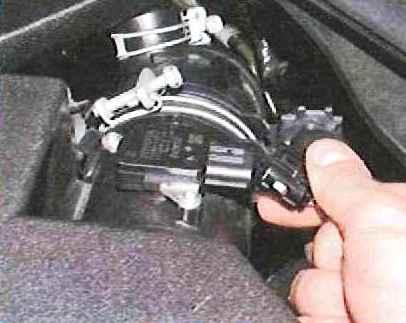
Squeeze the latch and disconnect the block of wires from the sensor

We unscrew the two fastening screws and remove the sensor
Install the sensor in reverse order
Throttle position sensor
Throttle position sensor connected to throttle shaft
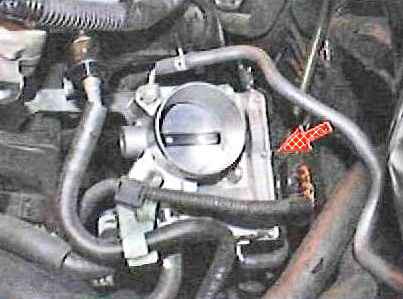
The action of the sensor is based on the Hall effect.
The rotation of the damper axis causes a change in the voltage of the sensor signal, by which the controller determines the degree of throttle opening
The sensor is built into the cover of the throttle assembly, so if the sensor fails, the throttle assembly assembly must be replaced
Oxygen concentration sensors
Oxygen concentration sensors are installed on the collector and exhaust pipe of the exhaust system
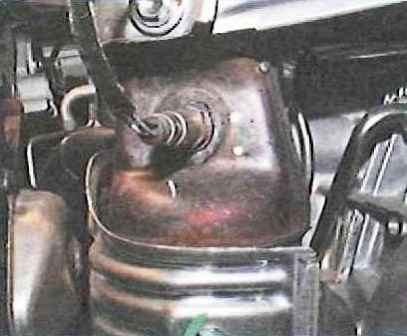
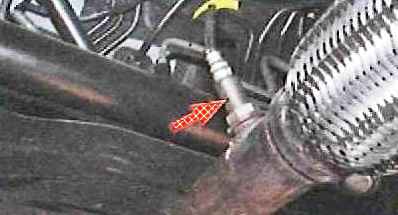
The sensor at the inlet to the converter is control, the sensor at the outlet of the converter is diagnostic.
Both sensors have a similar design
If at least one of the oxygen concentration sensors is defective, the toxicity of exhaust gases can increase dramatically, and fuel consumption will increase
To replace the control sensor, a 22 wrench is required
Disconnect the negative battery terminal
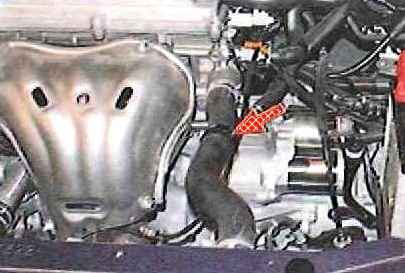
Cut the plastic clamp that secures the sensor wiring harness to the radiator inlet hose
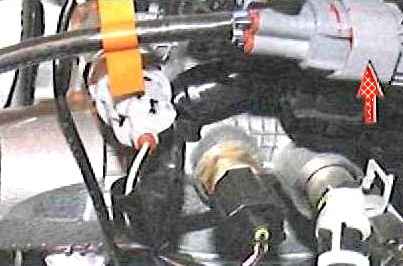
Squeeze the latches, disconnect the sensor wiring harness block
We unscrew the control sensor from the hole of the collector
To check the health of the control sensor, we measure the resistance between contacts 1 and 2 of its block.
At +20º C, the resistance should be 1.8-3.4 Ohm
Install the control oxygen concentration sensor in the reverse order. We replace the plastic clamp with a new one
Replacing the diagnostic oxygen sensor
Disconnect the wire from the negative battery terminal
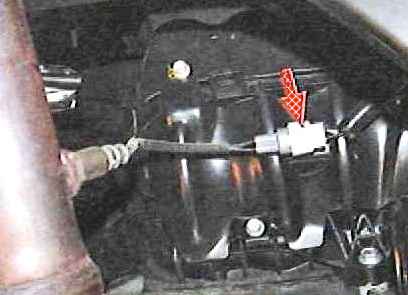
Squeeze the latches and disconnect the wiring harness block from the sensor
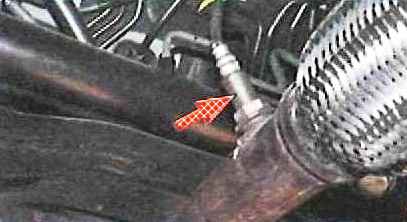
Unscrew the sensor from the intake pipe
To check the health of the control sensor, we measure the resistance between contacts 1 and 2 of its block.
At +20º C, the resistance should be 11-16 Ohm
Install the sensor in reverse order
Engine knock sensor
The knock sensor is mounted on a stud screwed into the wall of the cylinder block in its upper part.
When a sensor fails, the ECU stores a fault code and uses a bypass engine management program (with a reduced ignition angle to prevent detonation)
To replace the sensor, remove the decorative engine cover and disconnect the negative battery terminal
Remove the engine intake pipe
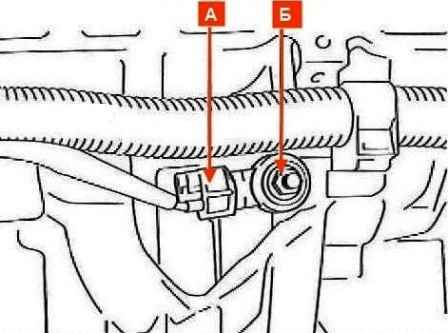
Squeezing the latches, disconnect the block of wiring harnesses “A” from the knock sensor
Unscrew the nut "B" and remove the sensor from the stud
To check the health of the knock sensor, we measure the resistance between its terminals. At a temperature of +20º C, the resistance should be 120-180 kOhm
Install the sensor in reverse order








